Building the Tyne Bridge
February 28th, 2025 | Frances CampbellDuring a recent deep dive into the AmberSide Collection, we came across these striking photographs documenting the construction of the Tyne Bridge. They are part of The Dorman Long Collection and they show the bridge from different perspectives and at different stages of construction. The photographs are brilliant examples of industrial photography; they effectively capture the scale and ambition of the bridge – which at the time was a feat of engineering – and celebrate the beauty of its complex design. Although these photos were taken 100 years ago, they remain awe-inspiring images that give insight into the origins of this iconic Newcastle landmark.
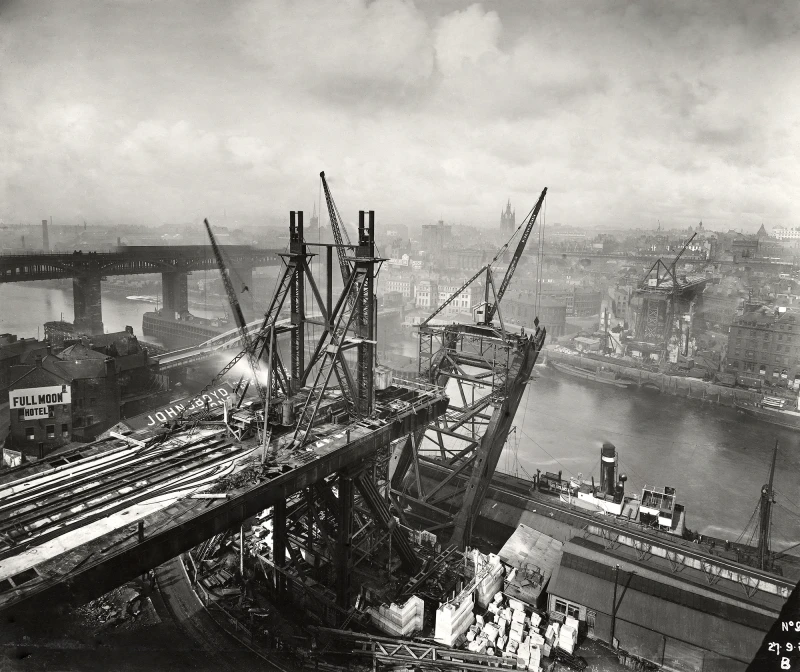
It’s a timely moment to revisit this collection as construction began on the Tyne Bridge 100 years ago in 1925. The bridge was built by Teeside company, Dorman Long, and at the time it was the world’s longest span bridge in existence. It was awarded Grade II listed status in 2018 and is currently undergoing a lengthy programme of refurbishment. Over the course of the last century, the Tyne Bridge has become a well-loved landmark and is one of the most recognisable symbols of Newcastle today.
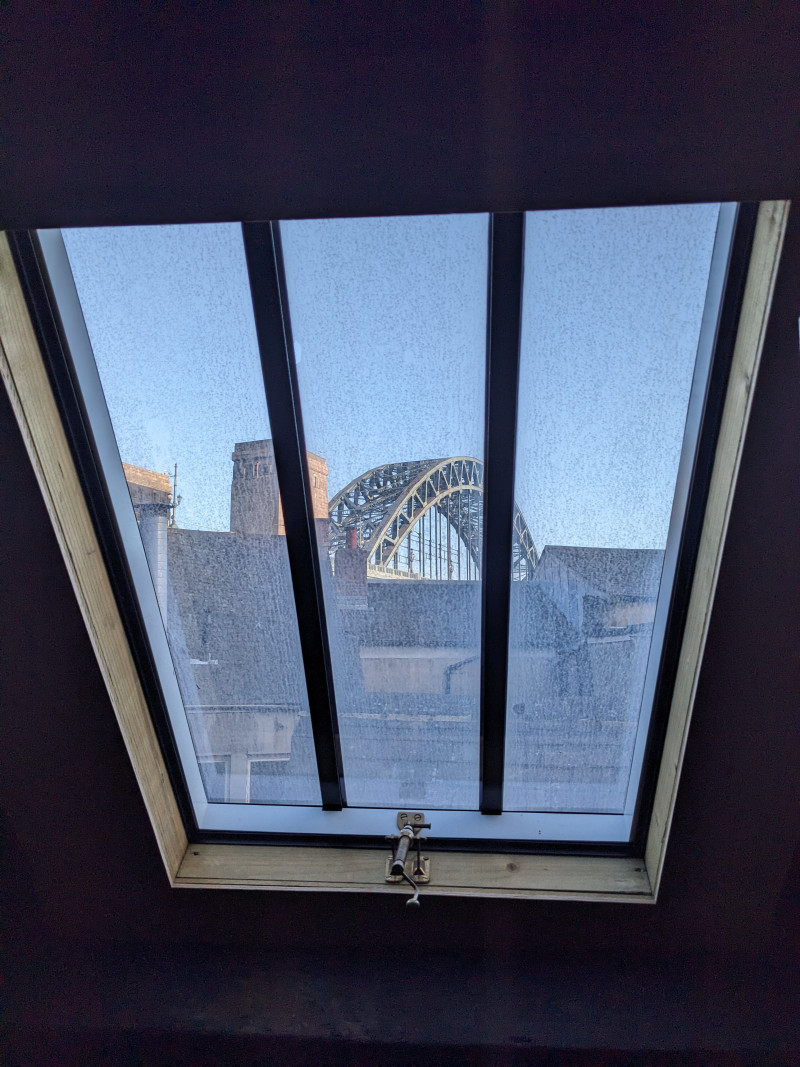
The bridge is close to the heart and history of the Amber Collective as it dominates the Quayside, where Amber located in 1971. Step out of the gallery onto Side and the bridge towers above you; climb to the fourth floor of the Amber office, and you’re rewarded by a perfectly framed view of the bridge spanning into Gateshead. The Quayside was important to Amber and inspired various works, including a film and photo series by Sirkka-Liisa Konttinen and Graham Smith.
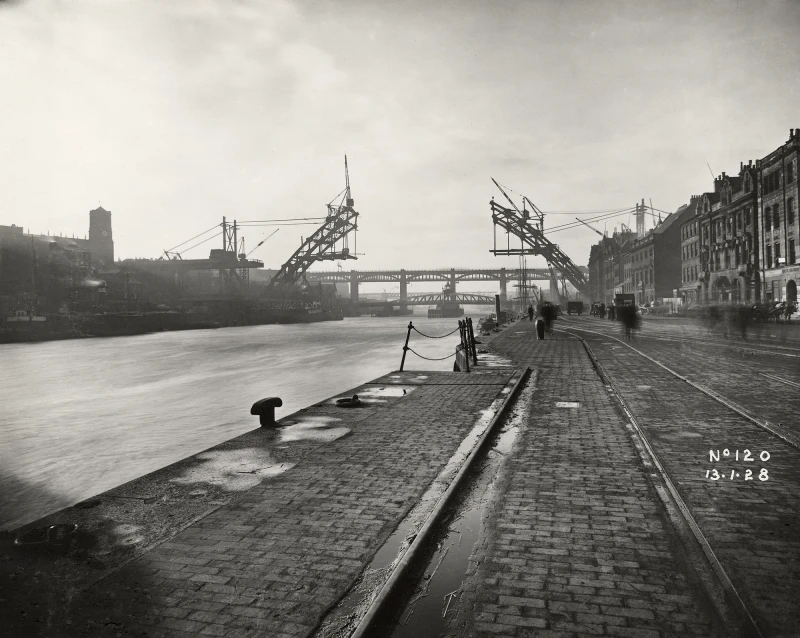
The Tyne Bridge is such a fixture in the skyline it’s hard to imagine a time when it wasn’t there. View of the bridge from down the river captures the brief period before the bridge was completed into its recognisable arch. The series - and this photograph in particular - is an important historic documentation of place. Although the bridge is the intended focus of the image, it captures lots of other interesting historical information about the Quayside: the layout of the street, the buildings that existed and glimpses of people and horses going about their daily lives.
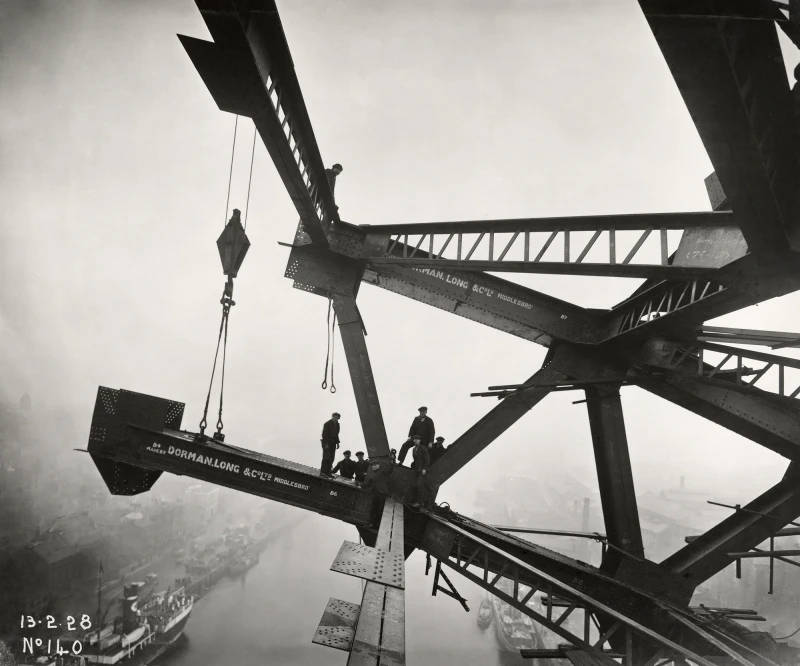
As time passes, the way we see images evolves and we likely view these photographs quite differently from how they were regarded in the 1920s. The purpose of much industrial photography was to celebrate the developments and achievements of industry – cleverly including workers to show the scale of the build – to document industrial progress and perhaps promote the work of the company. Dorman Long actually made a promotional film about the building of the bridge, so it’s likely these images were also intended for marketing. Today, it’s hard not to see these images without looking through a more humanistic lens. Workers on the final stages of the arch reveals the perilous nature of the industry and how high above the River Tyne these men were working. It’s a hair-raising image and one the Health and Safety Executive would have a lot to say about today.
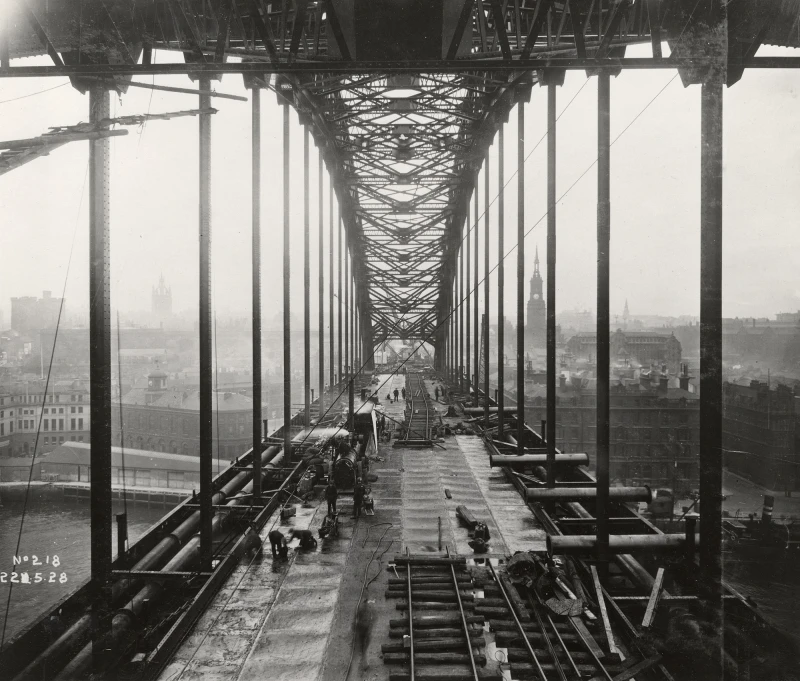
The composition and scale of these images effectively captures Newcastle at a peak of industry and places it firmly on the world stage. Given the scale of the construction, at first glance you would be forgiven for thinking these photographs were taken in New York; they clearly resonate with photographs taken of The Empire State Building Under Construction that were taken in New York just a few years later by Lewis Hine. Hine was committed to documenting working conditions across the United States and his photographs help lead to positive changes in working conditions.
These photographs still resonate today. They allow us to observe a precise documented moment in Newcastle’s history and from the vantage point of today, we can see what has changed since and what hasn’t. Aside from this, the collection celebrates a magnificent feat of engineering and offers a rare view of the origins of one of the city’s most famous landmarks.
An image from this collection is currently on display at the Farrell Centre, until 1 June 2025.
